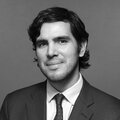How It Works
DNA databases contain genetic information about individuals, which can be analyzed against a suspect’s DNA for a potential match. According to media reports, the NYPD’s DNA database contains as many as 82,473 genetic profiles, including samples obtained from children.
Impact
DNA databases raise the following concerns:
Privacy. Biometric samples for DNA databases can be collected without appropriate standards that respect individual privacy. Individuals are not always given a full and accurate representation of how their genetic profile will be used, and there are often no protocols for deletion.
In addition, voluntary samples can be collected from children that are incapable of giving informed consent. Finally, the secret collection of “abandoned” genetic samples means that many individuals have no notice that their genetic information was collected and added to a city database.
Racial Bias. Communities of color are likely overrepresented in DNA databases resulting from overpolicing of specific communities.
NYPD Policy & Scope of Use
Detective Guide (2013) contains redacted instructions for collecting “abandoned” DNA samples in both “controlled” and “uncontrolled” environments.
Chief of Detectives Memo #17 (2010). The memo contains instructions for how to collect “abandoned” DNA samples from objects such as water bottles, bubble gum, and apples for submission to Office of the Chief Medical Examiner (OCME) for examination.
Many individuals in DNA databases have never been accused or convicted of any crime, and there are limited avenues for impacted indivudials to request deletion.
There are three methods for the NYPD to obtain biometric samples for DNA analysis:
1. Voluntary sample. Officers can ask individuals to provide a biometric sample for DNA analysis, but they are not necessarily required to disclose that it may be used for an unlimited number of investigations and that the sample will be retained indefinitely. They are also not required to tell individuals that they are allowed to refeuse consent. At times, police collect biometric samples from children without a lawyer, parent, or guardian present.
One New York State court ruled that the NYPD violated a minor’s Fourth Amendment rights against unreasonable search and seizure when they collected a genetic sample for DNA analysis where they received a written consent from the minor without the presence of his parent, guardian, or attorney.
2. Secret collection of “abandoned” samples. NYPD officers will obtain “abandoned” genetic samples from discarded objects, such as water bottles, chewing gum, and apples. For example, police officers bring suspects into interrogation rooms, wait for the suspect to take a drink or smoke a cigarette, and collect the sample once a suspect throws the object away.
3. Court-ordered collection. A court will order a suspect to provide a sample for DNA profiling where the prosecution can establish: “(1) probable cause to believe the suspect has committed the crime. (2) a ‘clear indication’ that relevant material evidence will be found, and (3) the method used to secure it is safe and reliable.”
